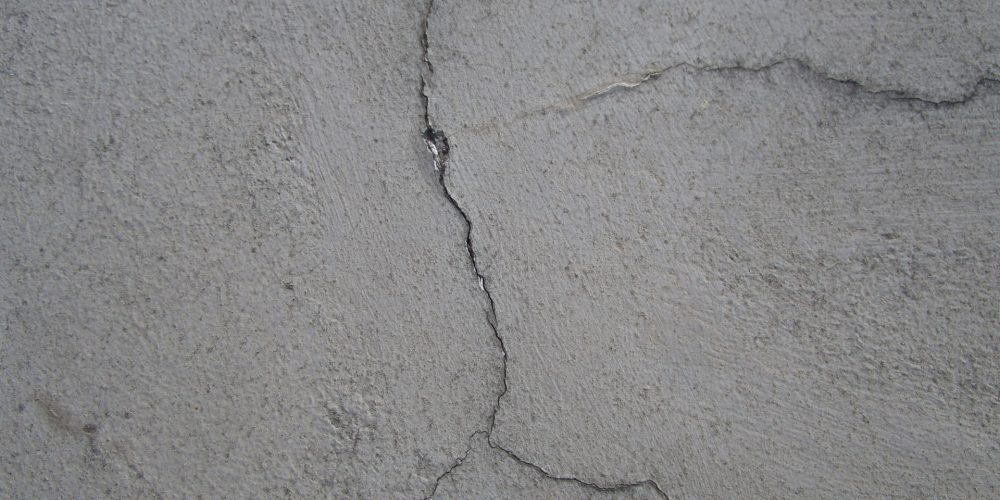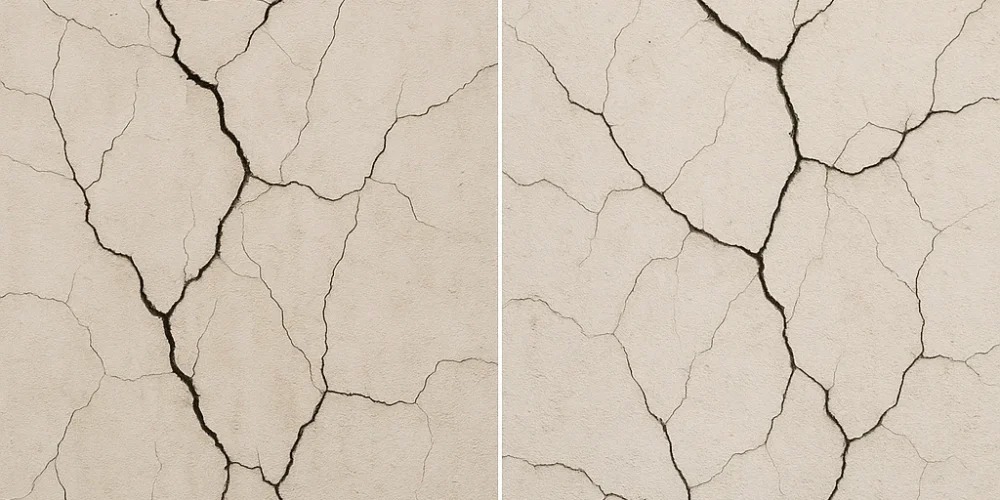
How can a property owner be sure that the plaster provided by the smaller or relatively inexperienced building contractor is acceptable, and if not, what can be done about it? It’s not a simple question to answer, says John Roxburgh, lecturer at The Concrete Institute’s School of Concrete Technology.
“Neither SABS specifications nor the National Building Regulations have measurable requirements covering hardened plaster quality. Most contract documents also are not clear on the subject. This means that it may be difficult to force the contractor to make repairs if the plaster is clearly not acceptable,” Roxburgh states.
Here he deals with perhaps the most obvious defect in plastering: cracks – those that are non-structural and the more challenging and nasty type: structural cracks.
“Non-structural cracking is a network of fine cracks, usually in a hexagonal pattern, which typically measures between 5 and 75mm across each hexagon. Craze cracks are usually very fine and shallow and do not extend through the whole depth of the plaster. They are usually the result of over-trowelling a rich mix – one with a high cement content – or using sand containing an excessive amount of dust: more than 15% by mass passing a 0,075 mm sieve. Crazing often occurs within a few hours of the plaster being applied to the wall and cracks may hardly be visible until dust or moisture makes them noticeable. However, the good news is that craze cracks are of relatively little importance, they do not open and close with time, and can be covered using a reasonable quality paint. If necessary, glass fibre tissue can be applied during the painting operation,” Roxburgh explains.
“Map cracking is similar to crazing except that it is usually deeper – sometimes going right through the plaster – and the hexagons of the pattern may measure up to 200mm across. These cracks normally occur when a plaster mix with a high cement content is used or the plaster is allowed to dry too quickly.”
“Map cracking is similar to crazing except that it is usually deeper – sometimes going right through the plaster – and the hexagons of the pattern may measure up to 200mm across. These cracks normally occur when a plaster mix with a high cement content is used or the plaster is allowed to dry too quickly.”
Causes of such excessive early moisture loss may include:
Adds Roxburgh: “When the cracks are noticed while the plaster is still plastic, they are often floated closed, only to reappear some time later. These cracks can be filled with a proprietary filler and be painted over. Glass fibre tissue can also be applied during painting. Cracking which results when an excessive amount of water is lost from the plaster in the first hours after application is known as plastic shrinkage cracking. Map cracking can be due to plastic shrinkage as can the horizontal cracks which form at corners and between windows.

“Drying shrinkage cracks are the result of moisture loss after the plaster has hardened. Plaster will always shrink and crack so it is desirable that is should develop a large number of fine, unnoticeable cracks at close spacing. Plasters with very high cement contents and those made with poor quality sand having a high water requirement will tend to develop a few, widely-spaced cracks. Plaster applied in layers that are too thick will also tend to crack in this way. These cracks are normally stable and can be filled with a proprietary filler and be painted over.
“Finally, you could encounter cracks that are clearly structural. These may have resulted from cracking of the wall caused by differential movement of the foundations, moisture expansion or drying shrinkage of masonry units, or thermal movement of the roof. This type of crack often forms in straight vertical or horizontal lines, or in stepped diagonal lines, and may be quite unsightly. The crack width will often vary with the seasons. Because these cracks originate in the wall and not in the plaster, repairing the plaster is ineffective. A specialist should be called in to establish the cause of the cracking and to recommend remedial measures that may include structural alterations which change cracks into movement joints. Visible joints can be hidden by cover strips fixed on one side of the joint or sealed with elastomeric sealants,” Roxburgh concludes.
Courtesy – The Concrete Institute

Contact Us 011 7083603
Email techncal@safeguardchem.co.za